What is a Maine Windjammer?
By Ted Scull & Heidi Sarna
The term windjammer applies to a commercial sailing ship with two or three masts that may be square-rigged or fore-and-aft rigged or a combination of both.
Some, dating from the late 19th century, were purpose-built as fishing boats, oystercatchers, cargo vessels, and pilot schooners, then later converted to pleasure cruising using mostly wind-only power.
A few, more recently built, yet still qualifying as windjammers, were designed for pleasure cruising, and these tend to offer more comfortable accommodations. A windjammer cruise emphasizes the joys of being under sail rather than offering daily port calls.
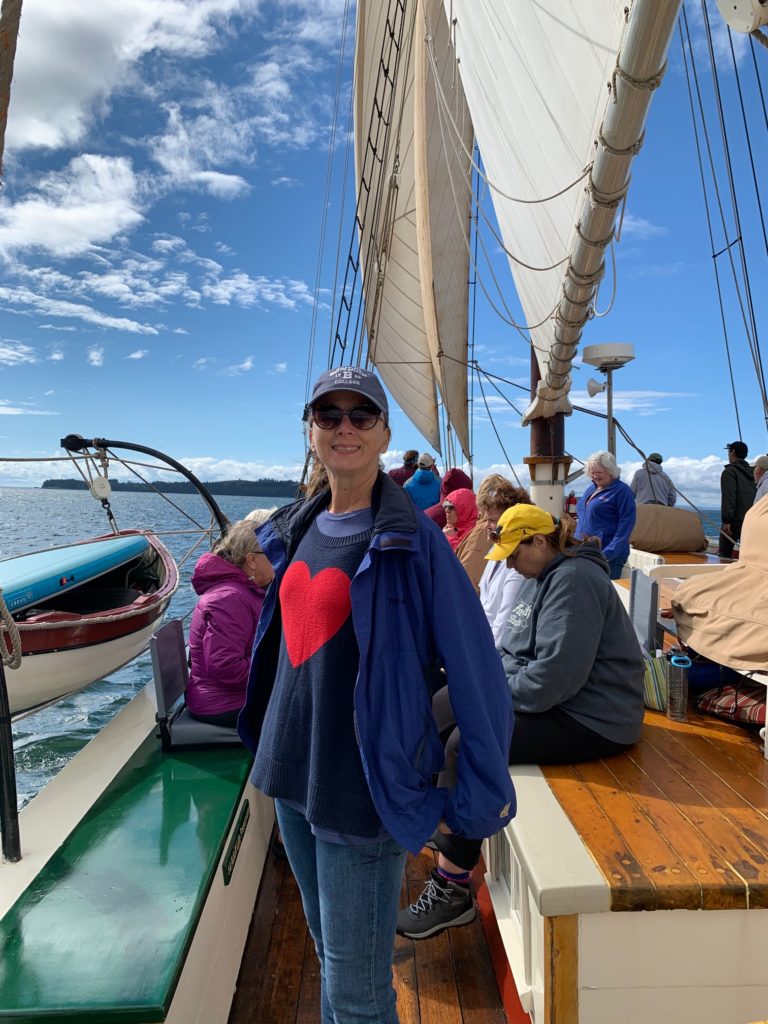
Heidi enjoying the journey on a recent J&E Riggin cruise. * Photo: Heidi Sarna
The largest number of windjammers (currently nine) are part of the Maine Windjammer Association, and they are based at the state’s coastal ports of Camden and Rockland.
Do not confuse the simplicity of windjammer accommodations with the far roomier creature comforts found aboard Sea Cloud, Star Clippers or Windstar.
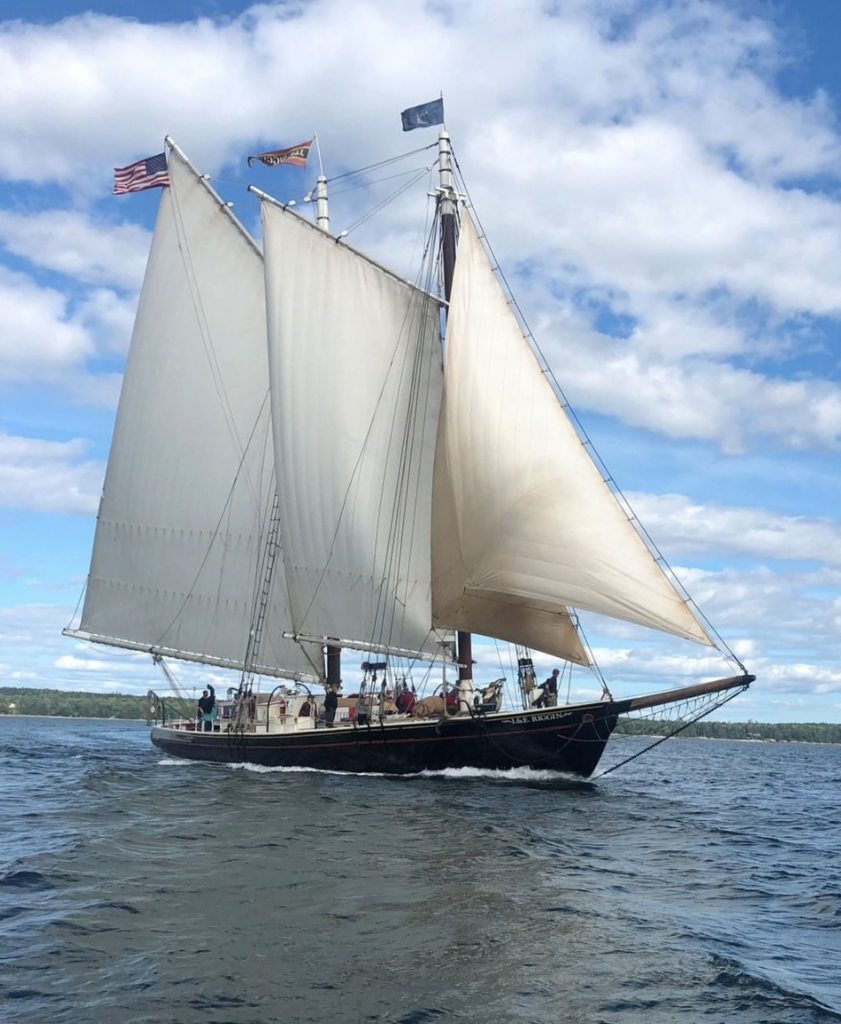
One of the 9 Maine Windjammer, the 24-pax J&E Riggin. * Photo: Schooner Riggin Instagram page
The History of the Schooner J. & E. Riggin
Here we share some background on the J. & E. Riggin as Heidi recently had the pleasure of sailing on her.
Designated a National Historic Landmark in 1991, J. & E. Riggin was built in 1927 in New Jersey for Capt. Charles Riggin as an oyster dredger, and named after his two sons, Jacob and Edward.
After some decades dredging oysters, the ship was then used for other kinds of fishing before being converted into a passenger vessel in 1977 by Capt. Dave and Sue Allen of Rockland, Maine.
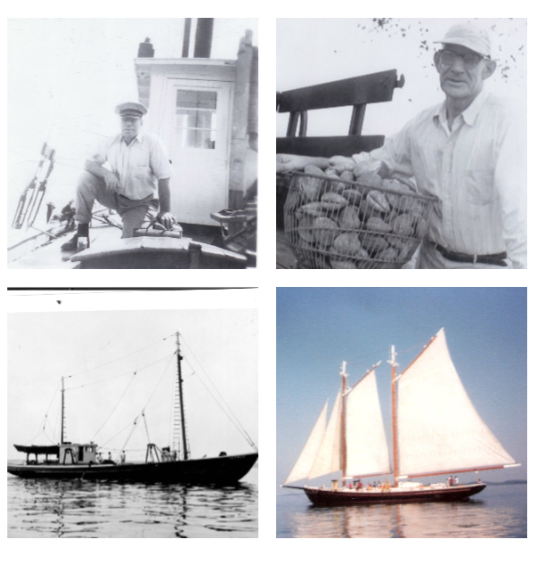
The old days when Riggin started out life as an oyster dredger. * Photo: Schooner J&E Riggin
The pair operated her for 20 years before selling J. & E. Riggin to Captains Jon Finger and Anne Mahle also of Rockland, who sailed her until 2021, when the current couple of captains took over, Justin Schaefer and Jocelyn Schmidt.
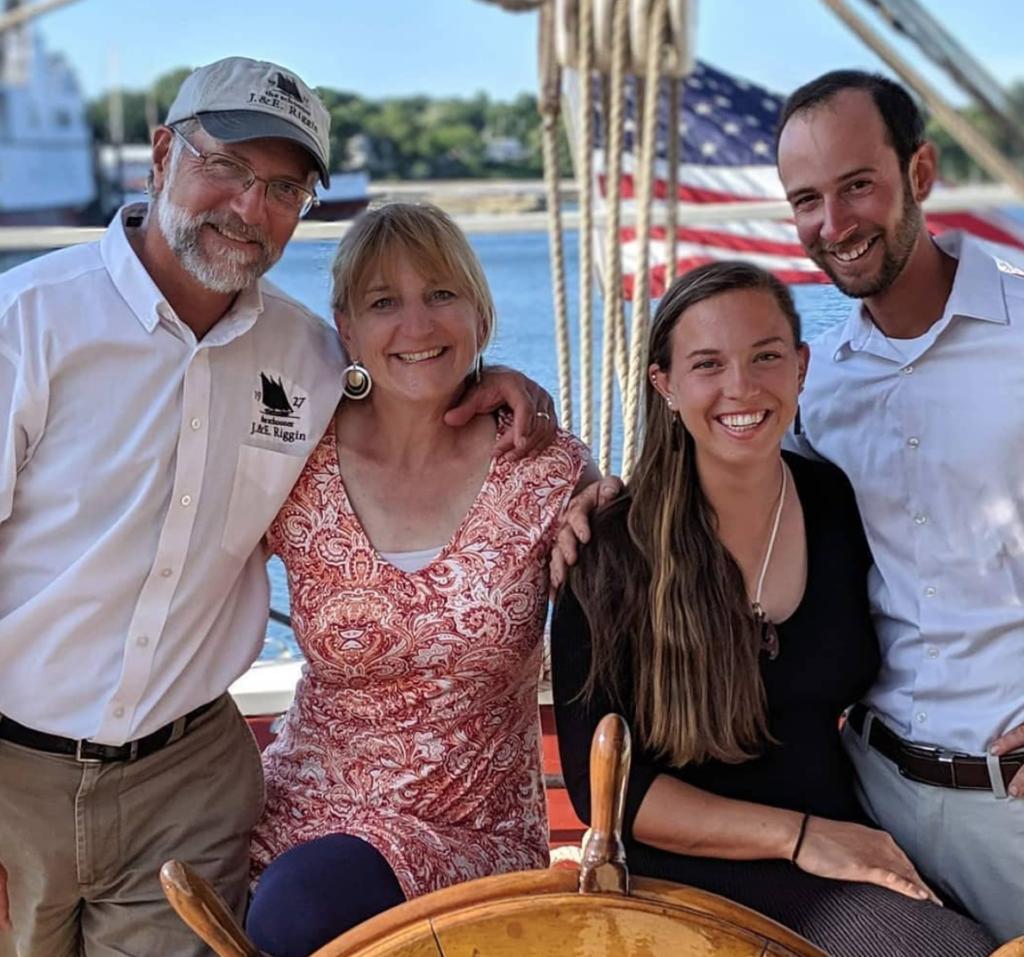
Riggin’s previous owners, captains Jon Finger and Anne Mahle, passing the Riggin on to her next owner-operators, Justin Schaefer and Jocelyn Schmidt. * Photo: Schooner J&E Riggin Instagram
These folks are all passionate about keeping J. & E. Riggin in good shape to continue sharing her legacy with like-minded travelers.
The bones of the nearly century-old J. & E. Riggin are original (the frames and some of the ceiling planks). What has been replaced and restored over the years (historic schooners need constant TLC and maintenance!) are in keeping with her roots.
For instance, the decking of J. & E. Riggin is made from white pine (oak is too heavy the captain told us), while the massive masts are hewn from Douglas fir, which one of the mates explained is more “bendable” in strong winds than oak.
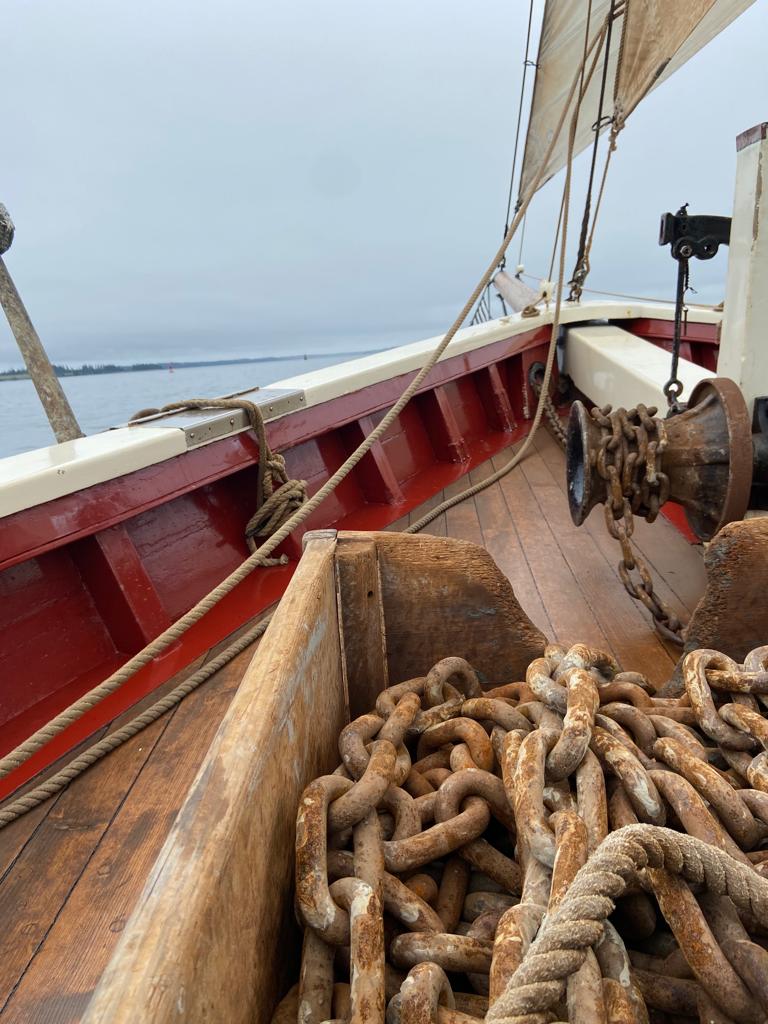
The J&E Riggin keeps the past alive. * Photo: Heidi Sarna
READ MORE: QuirkyCruise’s Heidi Sarna reviews her 4 memorable days aboard the J&E Riggin.
The Maine Windjammer Association
Stewards of nine Windjammers, the Maine Windjammer Association aims to preserve Maine’s working maritime history.
The fleet, whether schooner, ketch or purpose-built for passenger service, are individually owned and operated. And most are designated National Historic Landmarks.
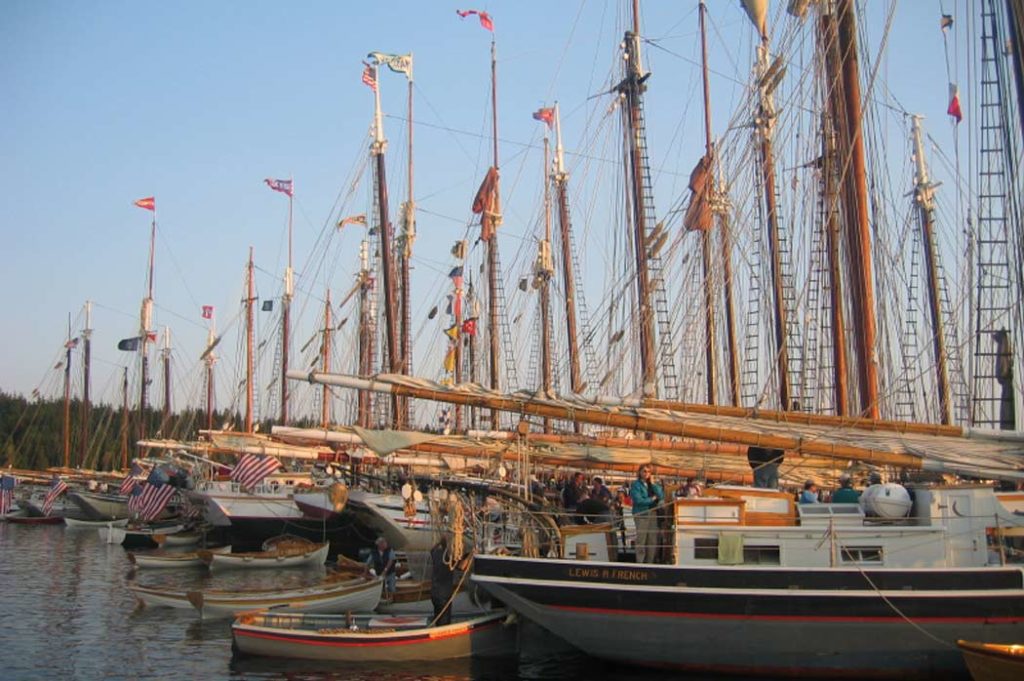
The entire fleet in all its glory. * Photo: Phil Dunn for the Maine Windjammer Association
Each of the nine Maine Windjammers carry from 16 to 40 passengers, with four to 10 crew.
They range in size from 64 to 132 feet in length on deck.
The largest fleet of working windjammers in America are based in the ports of Rockland and Camden, in Maine’s mid-coast region.
Besides driving, you can fly to the Portland International airport and then rent a car or hire a taxi; there is also bus and Amtrak train service from Boston and Portland to Rockland and Camden.
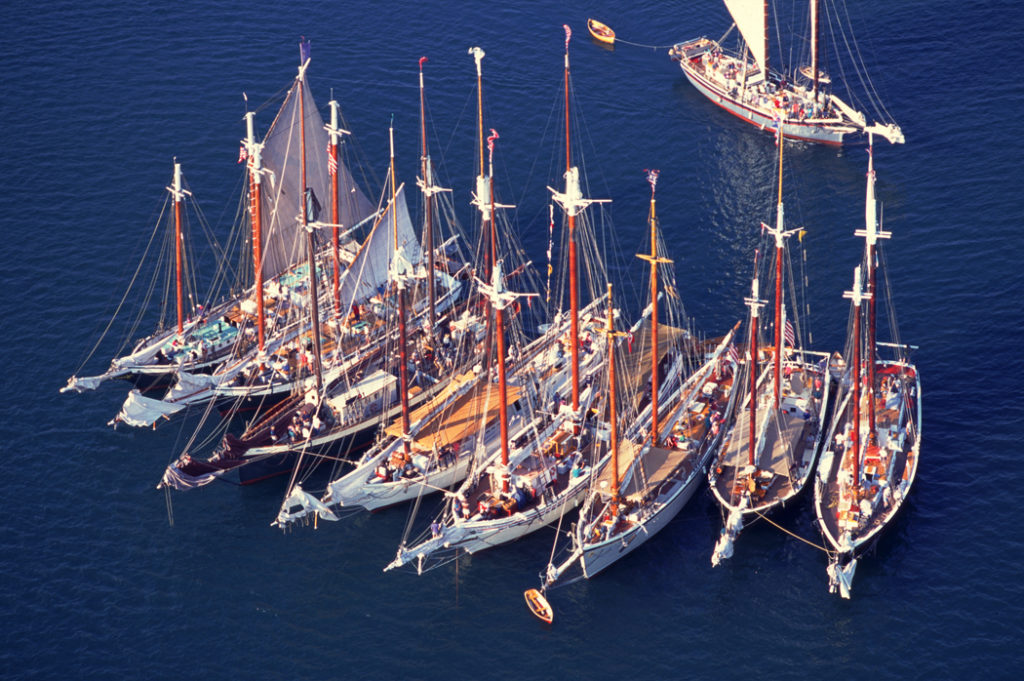
An aerial shot of a raftup meeting of the 9 Maine Windjammers. * Photo: Ben Margo for the Maine Windjammer Association
Below is an overview of the fleet of 9 Maine Windjammers
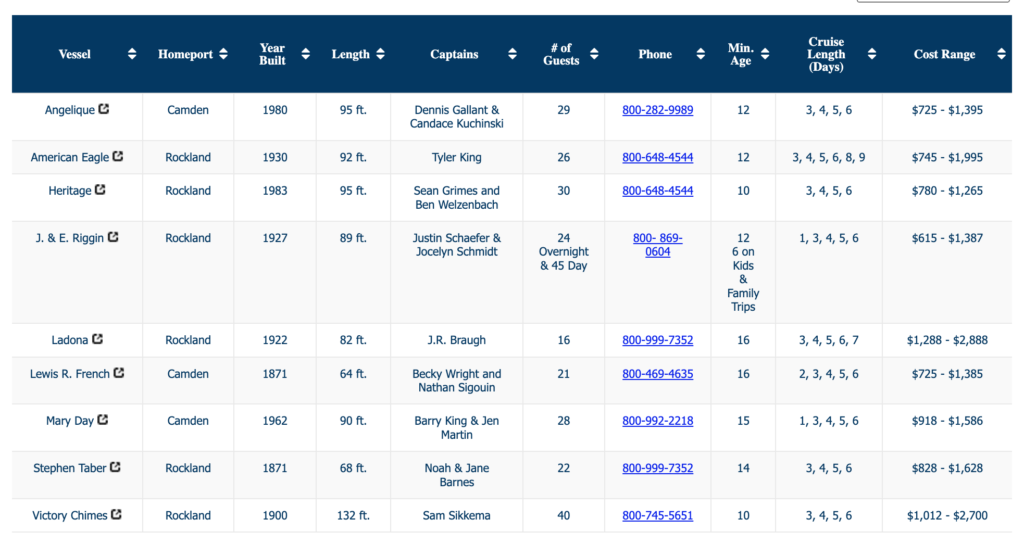
The 9-ship Maine Windjammer Association fleet. * Photo: Maine Windjammer Association
Don’t miss a post about small-ship cruising, subscribe to QuirkyCruise.com for monthly updates & special offers!
© This article is protected by copyright, no part may be reproduced by any process without written permission from the author. All Rights Reserved. QuirkyCruise.com.



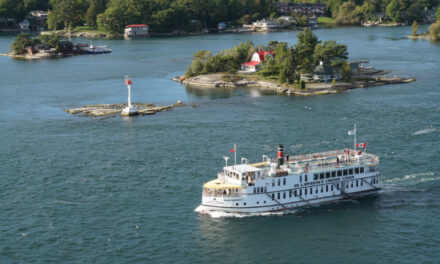
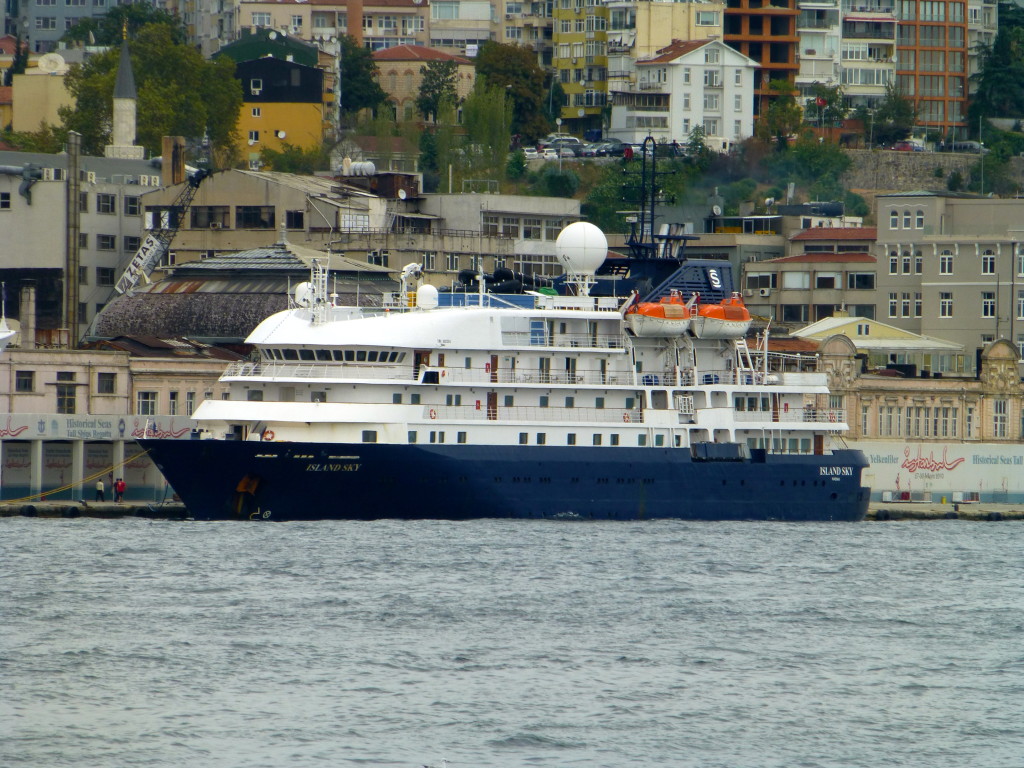









 HEIDI SARNA
HEIDI SARNA











